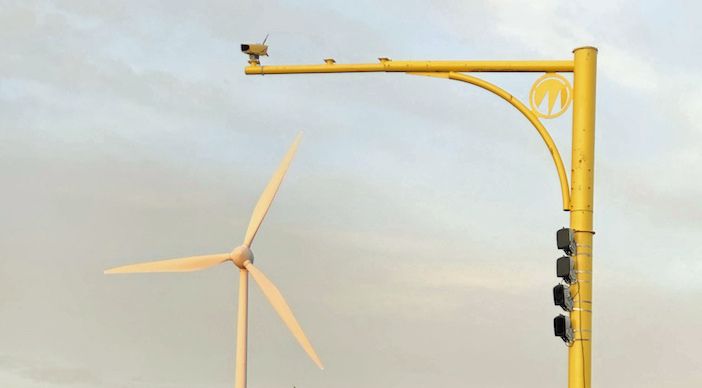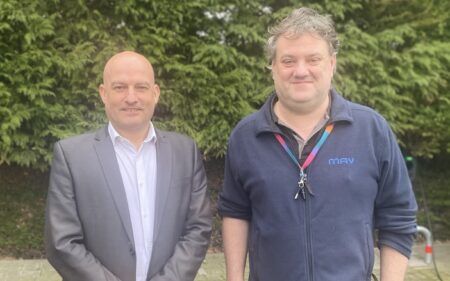Jenoptik has announced the launch an intelligent power solution for its Temporary Automated Speed Cameras At Roadworks (TASCAR), which uses a combination of wind, solar and hydrogen power to enable TASCAR to be set up anywhere, even if there is no mains power, while reducing CO2 emissions on-site to zero.
The new system is known as iTASCAR, with the i standing for ‘intelligent’, uses Jenoptik’s Specs average speed cameras and Vector infra-red lighting system, to enforce the essential limits in place to keep drivers safe and traffic flowing. Until now these solutions have required connection to the power grid or the use of diesel generators.
 iTASCAR is designed to be extremely energy efficient through the innovative design of both the Vector camera and the Vector infra-red lights, which are only activated when the camera’s shutter is used, rather than flooding the scene with light all the time. This reduced power draw means the system can be fully operational even through winter, 24/7, where other renewable energy-powered systems only work during daylight and fair weather.
iTASCAR is designed to be extremely energy efficient through the innovative design of both the Vector camera and the Vector infra-red lights, which are only activated when the camera’s shutter is used, rather than flooding the scene with light all the time. This reduced power draw means the system can be fully operational even through winter, 24/7, where other renewable energy-powered systems only work during daylight and fair weather.
The environmental benefits of iTASCAR are further enhanced by the co-location of Airly air quality monitoring sensors, which are mounted to the camera columns to provide 24/7 monitoring throughout the roadworks site. This not only allows the contractors and highway authority to understand the prevailing air quality conditions, but provides data that can aid intelligent decisions around certain construction activities – for example where particulates might be produced during construction, minimising the impact on the local environment.
“The technology has performed really well and the fuel cell arrangements have proved very successful,” explained Bob Feurtado, senior traffic manager, Morgan Sindall Infrastructure. “The air quality monitoring provides useful data and Jenoptik have worked collaboratively with Morgan Sindall Infrastructure and our stakeholders.”
The new approach has been successfully used at a number of UK sites, including the A11 Concrete Roads Replacement scheme, where power was not easily available and air quality was of particular importance.





